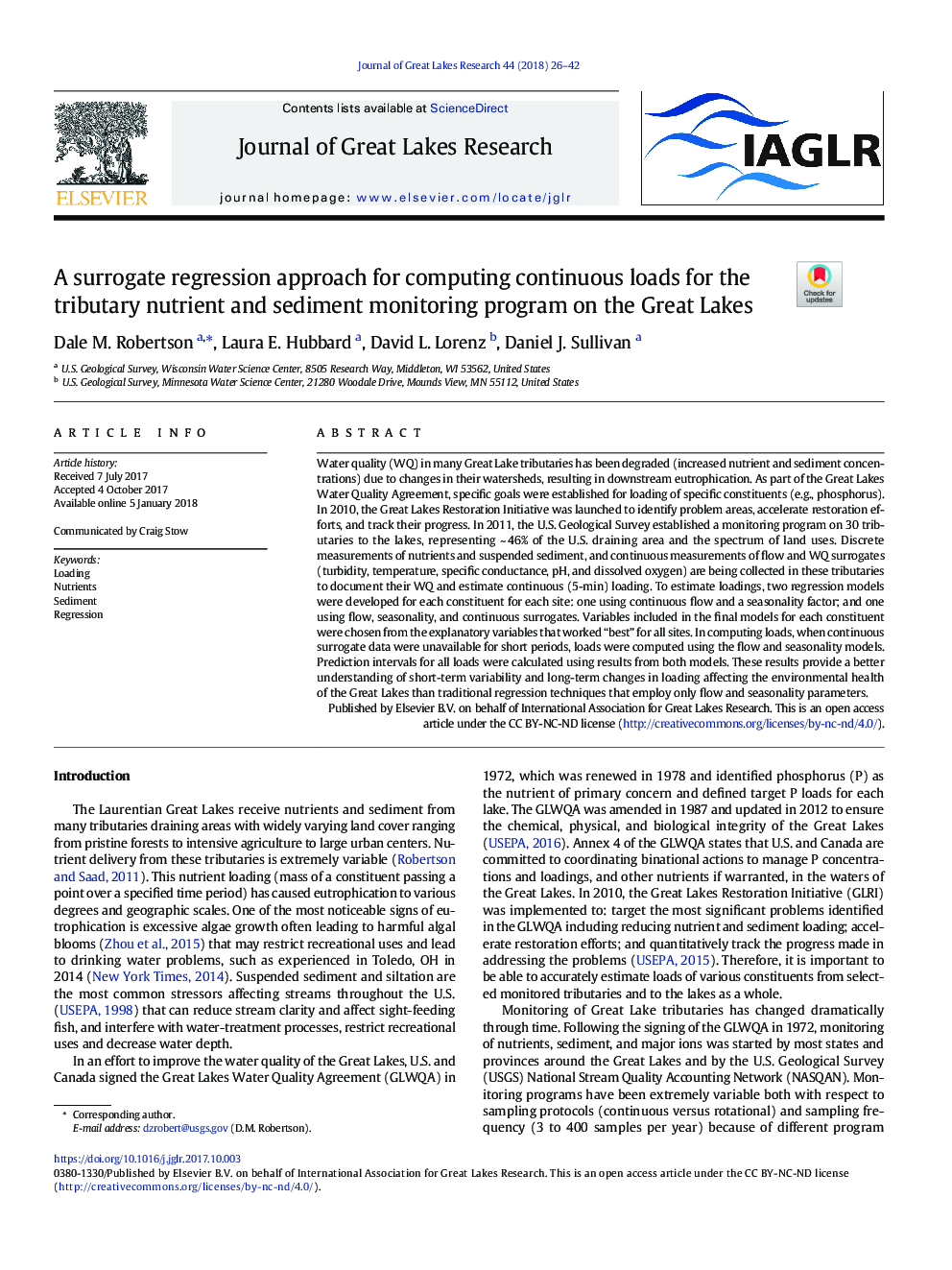| کد مقاله | کد نشریه | سال انتشار | مقاله انگلیسی | نسخه تمام متن |
|---|---|---|---|---|
| 8849146 | 1618517 | 2018 | 17 صفحه PDF | دانلود رایگان |
عنوان انگلیسی مقاله ISI
A surrogate regression approach for computing continuous loads for the tributary nutrient and sediment monitoring program on the Great Lakes
ترجمه فارسی عنوان
یک رویکرد رگرسیون جایگزین برای محاسبه بارهای مداوم برای برنامه مانیتورینگ مواد مغذی و رسوبی در دریاچه های بزرگ
دانلود مقاله + سفارش ترجمه
دانلود مقاله ISI انگلیسی
رایگان برای ایرانیان
کلمات کلیدی
بارگذاری، مواد مغذی رسوب، پسرفت،
موضوعات مرتبط
مهندسی و علوم پایه
علوم زمین و سیارات
علوم زمین و سیاره ای (عمومی)
چکیده انگلیسی
Water quality (WQ) in many Great Lake tributaries has been degraded (increased nutrient and sediment concentrations) due to changes in their watersheds, resulting in downstream eutrophication. As part of the Great Lakes Water Quality Agreement, specific goals were established for loading of specific constituents (e.g., phosphorus). In 2010, the Great Lakes Restoration Initiative was launched to identify problem areas, accelerate restoration efforts, and track their progress. In 2011, the U.S. Geological Survey established a monitoring program on 30 tributaries to the lakes, representing ~Â 46% of the U.S. draining area and the spectrum of land uses. Discrete measurements of nutrients and suspended sediment, and continuous measurements of flow and WQ surrogates (turbidity, temperature, specific conductance, pH, and dissolved oxygen) are being collected in these tributaries to document their WQ and estimate continuous (5-min) loading. To estimate loadings, two regression models were developed for each constituent for each site: one using continuous flow and a seasonality factor; and one using flow, seasonality, and continuous surrogates. Variables included in the final models for each constituent were chosen from the explanatory variables that worked “best” for all sites. In computing loads, when continuous surrogate data were unavailable for short periods, loads were computed using the flow and seasonality models. Prediction intervals for all loads were calculated using results from both models. These results provide a better understanding of short-term variability and long-term changes in loading affecting the environmental health of the Great Lakes than traditional regression techniques that employ only flow and seasonality parameters.
ناشر
Database: Elsevier - ScienceDirect (ساینس دایرکت)
Journal: Journal of Great Lakes Research - Volume 44, Issue 1, February 2018, Pages 26-42
Journal: Journal of Great Lakes Research - Volume 44, Issue 1, February 2018, Pages 26-42
نویسندگان
Dale M. Robertson, Laura E. Hubbard, David L. Lorenz, Daniel J. Sullivan,
